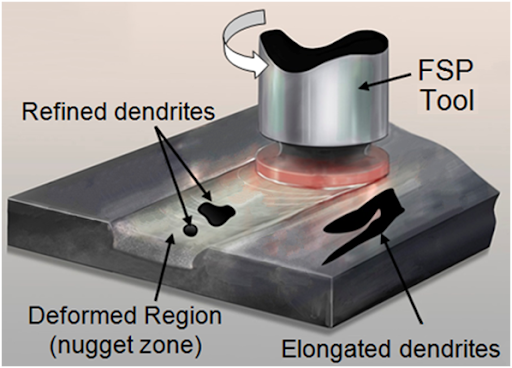Friction stir processing is a solid-state method to develop composite especially surface composite. In this method, a non-consumable rotating tool is used to make a composite. The tool is allowed to be inserted inside the workpieces up to a certain depth to process the material. The tool will be rotating with a certain rotating velocity and also travel at a certain travel speed. With the rotation of the tool, the material will also stir and rotate which produces dynamics recrystallization in the material and forms fine grain materials.
Fig. Frictions
stir processing
The development of fine grain material plays important
in the changes of mechanical and material properties. It
improves the hardness, strength, toughness, and wear resistance of the
material. These are the important mechanical properties to
make any mechanical component.
To make composites with the help of FSP, grooves or
holes need to be made on the upper layer of material to be
processed. This can be done by any milling machine. Hard ceramic
particles such as SiC, B4C, MoS2, Al2O3, Tio2 can be filled in this
grooves. The first step is to close this groove with the pinless tool.
Then a non-consuming rotating tool is employed over the work surface
with the predecided rotational speed. The FSP tool consists of a pin and
column. The pin part will penetrate inside the workpiece and force the
material to stir along with it. Because of this, the material will go
into intense plastic deformation and dynamics recrystallization
happens with the processed material.
Fig.
FSP tool


No comments:
Post a Comment